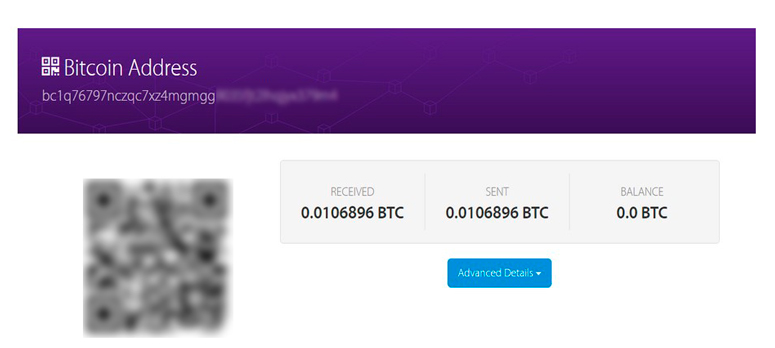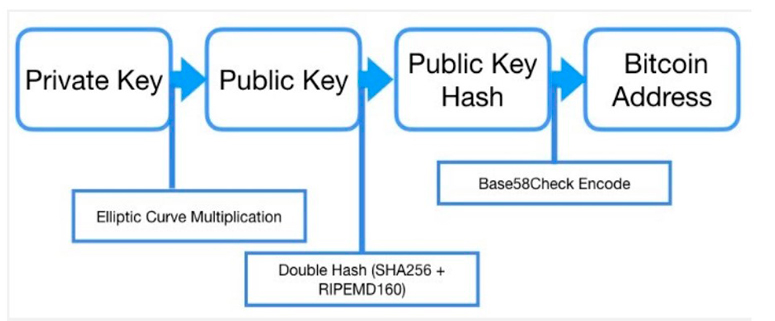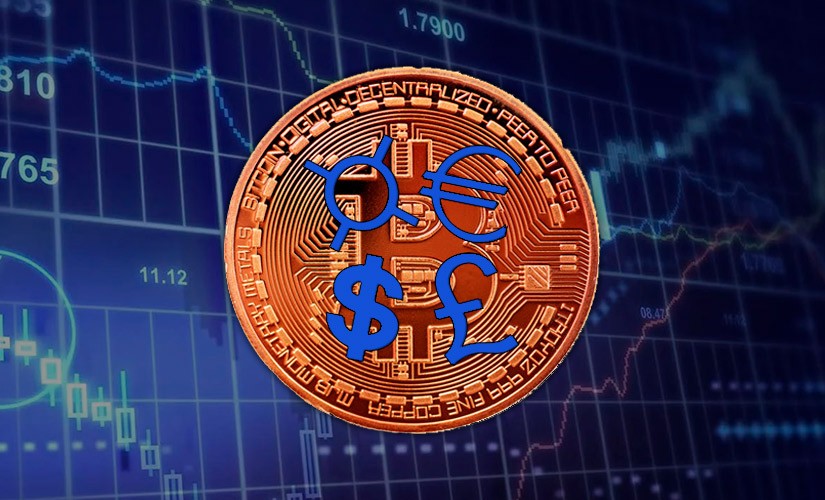To conduct a transaction with Bitcoin, no complicated actions are required from the user. However, to carry out a transaction, it is necessary to understand where to get the bitcoin wallet address, why it changes, how many identifiers can be created, what formats are available. It is important to consider the concepts of private and public keys, get acquainted with the capabilities of the best services for storing coins.
What is the address of a bitcoin wallet
This is a generated sequence of letters and numbers, which is created automatically or on request after registration. In one service, a user can get several addresses.
The string of characters is used to make the payment. After the payment is completed, the sender has no reason to store this data. In case the wallet is hacked, the owner can lose his BTC. This is the main reason why it is recommended to use a new ID for every next transaction.
What it’s for
Users can use the BTC wallet address to withdraw and receive coins. When conducting a transaction, it is inserted into a special field. At the same time, it is worth taking into account the case of characters. It is better to copy the address through the clipboard, because if there is an error, the transfer will not pass, and the coins will be lost.
You can get the address of the Bitcoin wallet when registering on the exchange in your account, as well as when creating a paper, hardware or mobile storage.
5020 $
bonus for new users!
ByBit provides convenient and safe conditions for cryptocurrency trading, offers low commissions, high level of liquidity and modern tools for market analysis. It supports spot and leveraged trading, and helps beginners and professional traders with an intuitive interface and tutorials.
Earn a 100 $ bonus
for new users!
The largest crypto exchange where you can quickly and safely start your journey in the world of cryptocurrencies. The platform offers hundreds of popular assets, low commissions and advanced tools for trading and investing. Easy registration, high speed of transactions and reliable protection of funds make Binance a great choice for traders of any level!
Example
The address is a set of 26 or 35 digits and letters (digits 1, 3 or bc characters come first) that can be generated into a QR code. All characters of the Latin alphabet are used except 0, the letters O, uppercase I and small l. The identifier does not convey information about the wallet owner.
Examples of bitcoin addresses are 1A1zP1eP5QGefi2DMPTfTL5SLmv7DivfNa or bc1qyv98gzrx768yh6074m0rp69tsng48m97t0ynj2

Formats
BTC identifiers have several types. Most often 3 variants are used:
- P2PKH (Pay to PubKey Hash) – the format of the very first version.
- P2SH (Pay to Script Hash) – more complex in functionality than the previous one.
- Bech32 – extended type, which is used in the updated SegWit protocol to reduce the block chain size and increase transaction speed. Since it is new, it is not used in all wallets.
Below are the formats of identifiers.
Information in the wallet address
With the help of monitoring services by identifier you can find out:
- Vault balance.
- Details of all transactions.
- The amount of cryptocurrency sent.
- The address of the BTC recipient and the sender.
- The hash of the transaction.
- Fees.
- The time of the transaction.
- Number of confirmations.
Public and private keys
These are the codes used to access the wallet account. Some people assume that an address and a public key are the same thing. They are not, but they are mathematically related. The identifier is a hashed version of the former.
Each public key is 256 bits long. A hash has this parameter of 160 bits. It is used to ensure that the user owns an address to which funds can be received. The public key is mathematically derived from the private key.
The latter is a randomly generated string for the wallet that is always mathematically related to the identifier. It allows bitcoins to be spent.
You cannot transfer private keys or seed phrase to another user. This can result in the loss of all coins.
Bitcoin address generation
Using a one-way cryptographic hash function, a public key is created from the private key and a bitcoin identifier is generated from it.
Address generation is user-independent and happens randomly. It is impossible to get 2 identical identifiers. This is embedded in the algorithm of the technology.

Services for hash generation:
- WalletGenerator
- BitAddress.
How to know the address
Most vaults make it easy to find and use the BTC identifier. To view it, you need to:
- Open the app and log in.
- Click “Wallet.”
- Select the cryptocurrency Bitcoin.
- Get the sequence of symbols.
In some services, you can find the bitcoin address in the account settings, while in others you need to tap “Receive” to display it on the screen.
How to create an address
There are different ways to get an identifier. The three most popular methods are:
- Exchange account.
- A mobile or software app.
- Offline storage.
After registering on an exchange, the user receives a Bitcoin address. No trading operations are required to access the account.
To get an identifier through a software or mobile wallet, you need:
- Go to download applications in the App Store (for iOS) or Play Market (for Android).
- Find and download the selected program client.
- Open it, write down a seed phrase (a list of a sequence of words to generate private keys).
- Set a strong password.
- Obtain an identifier.
Standalone vaults are the recommended way to get bitcoin storage addresses. You can use hardware wallets Trezor, Ledger or create a paper version.
The first type of vaults generate the identifier on their own. Public and private keys for a paper wallet are created through special services, such as BitAddress.
Verification of the transaction by wallet address
Certain programs (blockchain observers) can be used to track cryptocurrency transactions. It is necessary to enter the transaction hash (ID) in the search field on the site. After that, most services provide the user with a page with data, where you can see confirmed and rejected transactions, the number of blocks, and other useful information.
The best wallets for storing BTC
Hardware devices are considered the safest for storing digital assets. However, the number of services for computers and cell phones is much larger.
Ledger Nano X offers a large storage capacity and supports more than 1500 coins at a time. All activity is visible on the device’s screen, giving you full control over transactions that are signed using a private key. Ledger has its own sophisticated operating system to protect the device from any attacks.
There are two account options SegWit (P2SH), SegWit Native (bech32). The Ledger Nano X was priced at €119 in July 2021.
TheTrezor T has similar features as the first type. It also has a built-in screen for user experience. The hardware wallet and software specifications are open source. Trezor works with over 1,000 coins. Among the security features is a program that allows you to create and store complex passwords. The price of the Trezor T is €159.
BitBox02 is a hardware vault for computers. It works via a PC’s USB port, and the storage card is used for quick backups and restores. There is a SegWit Bech32 format, working with Bitcoin, Litecoin, Ethereum. The price is €109.
Ellipal Titan (hardware) – only QR code transfer is used to sign transactions. Thus it is protected from connections such as USB, Wi-Fi or Bluetooth. If there is a hacking attempt, the wallet deletes the private keys stored inside. The service has a screen, is easy to use, and allows you to see transactions (QR codes). The price is €169.
Atomic Wallet is one of the oldest multicurrency applications. Besides bitcoins, it works with over 300 other coins and tokens.
Exodus (software-based, mobile) – it can be used with the Trezor T hardware wallet. It has a built-in exchange, supports over 100 cryptocurrencies, and gives you the opportunity to earn additional coins.
Electrum (software, mobile) – designed for bitcoin storage only. Provides the following features:
- Two-factor authentication with multiple signatures.
- Presence of settings to select language, set PIN, show balance in fiat currency.
- Setting your own transaction fee.
- Working with hardware vaults.
- Creating a large list of BTC identifiers.
Mycelium (mobile) works with the new SegWit format. The account contains 3 private keys. When sending bitcoins, the transaction fee is set. There are several languages to choose from. Works with Trezor, KeepKey.
BitPay (software, mobile) supports Bitcoin, Bitcoin Cash, Ethereum, Dogecoin and other coins. Uses multi-signature authorization for protection. Has open source code. Uses a commission for fast automatic bitcoin exchange. In the mobile version, you can scan a QR code.
Guarda – Available as web, software and mobile wallets. Transactions are very fast due to set commissions. It has a built-in exchange.
BlueWallet (mobile) is a multi-signature application. Allows you to use your fingerprint to make transactions, download or delete the app. Can be operated via TOR for anonymity.
Trustee Wallet (mobile) is a very popular app with good reviews. It can be used to store bitcoins and 15 other base coins (BTC, ETH, LTC, XRP and others) as well as tokens in Ethereum and Tron blockchains.
Bitcoin (mobile) is created only for owners of BTC and bitcoin cache coins. In the settings you can specify the size of the transfer fee.
Coinomi (software, mobile) – multi-currency app can store bitcoins and 1770 other coins. Has real-time support, provides access to a knowledge base.
Frequently Asked Questions
❓ How to send cryptocurrency by scanning a QR code?
All you need to do is log in to your service account and click on the “Wallet” tab. When you press the “Send” button, you will be able to find the QR code. After scanning it is necessary to specify the amount of transfer, the recipient’s ID. Next, the transaction takes place.
🤨Why does the ID constantly change?
Many vaults are hierarchically deterministic. They generate a new identifier every time a user receives digital assets. This keeps the balance anonymous.
✅ Can a transaction be tracked by the address of the BTC recipient?
Special monitoring services allow you to do this.
⛓ Is it possible to see private keys in the blockchain?
They are not stored in the blockchain. They need to be kept offline in secure storage.
✔ Is cryptocurrency safe?
Cold bitcoin wallets are hard to hack, and generating a new hash makes transactions anonymous.
😱 What happens if, lose the keys?
An attacker can transfer all the bitcoins to himself, or the owner will not be able to log into his personal account and get the coins.
❔ Why do some address numbers start with 1 and others with 3?
It depends on the format. There are only 3 of them: P2PKH has the first digit in the number 1, P2SH has 3, Bech32 starts with bc1.
❗ How many bitcoin addresses can I have?
One user can have any number of identifiers.
👛 What does a bitcoin wallet do?
It creates private keys, stores them, uses them, and allows you to manage transactions.
❕ What does a private key look like?
It can be in different formats. For example, a WIF looks like a string of 51 characters and starts with 5.
Is there an error in the text? Highlight it with your mouse and press Ctrl + Enter.
Author: Saifedean Ammous, an expert in cryptocurrency economics.















